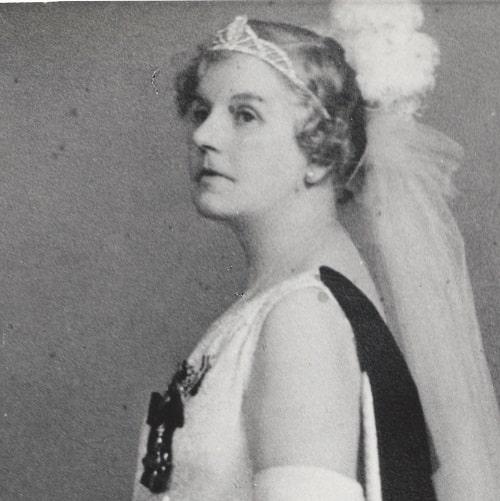Anne Louise Mcllroy was born at Lavin House, County Antrim, the daughter of James Mcllroy MD, JP, a well known general practitioner in Ballycastle.
She qualified from the University of Glasgow in 1898, being the first woman to complete her medical studies there; two years later she was awarded the MD Glasgow with commendation. A year later she obtained the LM Rotunda in Dublin. After further postgraduate study in London, Berlin and Vienna she returned to Glasgow as gynaecological surgeon to the Victoria Infirmary. She obtained the DSc Glasgow in 1910 and became senior assistant to the Muirhead Professor, Munro Kerr.
At the outbreak of war in 1914 she joined the Scottish Women’s Hospital Foreign Service and became ‘médecin chef’ of the Hospital at Troyes. She was awarded the Croix de Guerre in 1916. She also served in Serbia and Salonika and eventually with the Royal Army Medical Corps in Constantinople. As a result of her experiences in Turkey she wrote her first book From a Balcony on the Bosphorus. In 1920 she was awarded the OBE for her war service.
After the war she returned to Glasgow for a short time, but in 1921 she was appointed Professor of Obstetrics and Gynaecology at the London School of Medicine for Women, now the Royal Free Hospital Medical School. She became surgeon to the Marie Curie Hospital, founded by groups of women doctors to provide radiotherapy for women. She was the first woman professor of obstetrics and gynaecology and the first at the London School of Medicine, so that she had an uphill task in establishing the professorial unit. Her efforts were recognised when she was created DBE in 1929, and in 1931 received the Hon DSc of Belfast, an honour which greatly pleased her. She was a Foundation Fellow of the Royal College of Obstetricians and Gynaecologists in 1929.
In spite of her many distinctions she conquered further fields when she became MRCP London in 1932, receiving the FRCP in 1937. She obtained the DSc London in 1934 and LLD Glasgow in 1935. Her interest in medico-legal matters culminated in her becoming President of the Medico-Legal Society of London.
She retired early from her chair in 1934 in order as she said ‘ ‘to gain a few years of freedom". She acted as consultant to Bermondsey Medical Mission, Thorpe Coombe Maternity Hospital and the Boroughs of Finchley and Walthamstow, and also had a private practice in Harley Street.
As a member of the British Medical Association she served as Vice-President of the Section of Obstetrics and Gynaecology in 1922, 1930 and 1932, and was a member of the Representative Body from 1936 to 1939; a member of the Council from 1938 to 1943 and President of the Metropolitan Counties Branch in 1946. She also held office as President of the Section of Obstetrics and Gynaecology of the Royal Society of Medicine.
When war broke out again in 1939 she became consultant to Buckinghamshire County Council and organised maternity services there. Working day and night in the black-out and with limited equipment, she organised an efficient service and was senior obstetrician to the Fulmer Chase Maternity Hospital for Officers’ Wives.
She was an Honorary Fellow of the Liverpool Medical Institute.
Eventually she left London to spend her last years in retirement with her sister, Dr. Janie Mcllroy.
Her life was one of great achievement, as shown by the many honours and distinctions she gained. She was a brilliant public speaker and a vivid and charming conversationalist, as would be expected from her Irish birth.
She wrote a great deal and her special interests were toxaemias of pregnancy (her Ingleby Lectures on this subject, were published in 1936), and in the relief of pain in childbirth. She was one of the first to insist that analgesia and anaesthesia were offered to every woman in labour. She also wrote on the subject of asphyxia in the newborn.
She was a woman of strongly held opinions and did not hesitate to express them in private and in public. She gave evidence against Dr. Marie Stopes in the famous trial which took place as a result of certain of Dr. Stopes’ writings. Her assistants and juniors found her a hard task-master, expecting the best from everyone who worked with her, but she was loyal to them, though devastating in criticism if warranted.
She was a most hospitable hostess and gave memorable parties at her cottage in Buckinghamshire, an area of the country which she came to know and love well, and for which she did so much.
Her striking presence and great personal charm are personified in her portrait by Sargent which hangs in the Royal Free Hospital Medical School.
Dame Josephine Barnes
[Brit.med.J., 1968, 1, 451; Lancet, 1968, 1, 429; J. med. Women’s fed., 1968, 50, 65 & 101]

